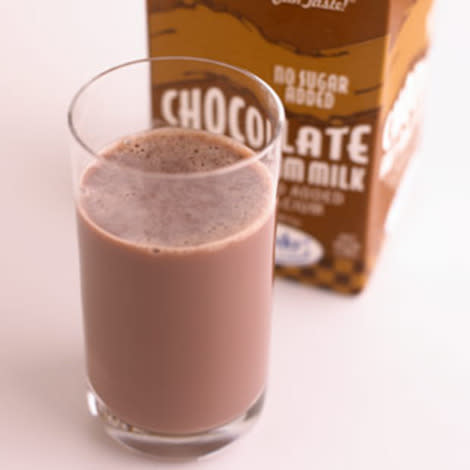4 Foods to Pack in Your Kid’s Lunchbox

By Brierley Wright, M.S., R.D., Nutrition Editor, EatingWell Magazine
It's that time of year when many of us start thinking about back to school. And, as a nutrition editor and registered dietitian, that means lunch (and maybe even breakfast or snack). "What should I be packing for meals for my kid while they're at school?" is a question I hear often.
Don't Miss: 5 Healthy-Sounding Kids' Foods That Aren't
Here are a few suggestions to help you fuel your kiddo's young brain and body.
For breakfast: oatmeal. Reams of studies show that fueling the brain with breakfast is important for thinking, acting and learning. And children who are undernourished perform poorly on cognitive tasks. But not just any breakfast will do: research shows that fueling your kids with slower-burning carbohydrates (also called low-glycemic-index foods) like oatmeal instead of faster-burning, or high-glycemic-index, breakfast foods (think: sugary cereals) helps them to maintain their concentration and attention throughout the school morning. If oatmeal isn't popular, try bran cereals or whole-wheat bagels.
Related: Delicious, Healthy Kids Breakfast Recipes
For lunch: beans. Studies show that being even mildly iron-deficient affects learning, memory and attention. (About 10 percent of young women are anemic--because of their monthly loss of iron-rich blood.) Luckily, restoring iron levels to normal also restores cognitive function. And beans are a good vegetarian source of iron. Try this Zesty Bean Dip: Combine 1/4 cup fat-free canned refried beans, 1 tablespoon salsa, 1 1/2 teaspoons chopped fresh cilantro and 1 minced scallion (optional) in a bowl. Serve with 1 ounce (about 10) tortilla chips. If beans aren't of interest, here are some other iron-rich food ideas: dark leafy greens, meat, poultry, fish or soy (tofu, edamame/soybeans).
Don't Miss: 9 Ways to Get Your Kids to Eat Healthier
For lunch: chocolate milk. During childhood and adolescence, the body uses calcium to build strong bones--a process that's all but complete by the end of the teen years. Yet most kids (adults too, actually) don't get their recommended daily dose of calcium or vitamin D. Serving your kid milk--plain or chocolate--with lunch is a great way to get more of both of those nutrients. In fact, research shows that children who drink milk at lunch are the only ones who come close to meeting their daily calcium recommendations. And despite all those chocolate milk naysayers, compared to kids who drink plain milk, children who drink flavored milk consume more milk overall (both unflavored and flavored) and fewer soft drinks and sweetened fruit drinks. Plus, there is no difference in the BMI (Body Mass Index) of children who drink flavored milk compared with plain milk or nonmilk drinkers. Is your kid not a milk drinker? Try low-fat yogurt or cottage cheese instead.
Don't Miss: What Food Won't Jamie Oliver Let His Kids Eat?
For snack: watermelon. Just as its name implies, watermelon is 92 percent water--and a great way to help your child stay hydrated (about 20 percent of our daily fluid intake comes from food). Staying hydrated is so essential because it keeps your memory sharp, your mood stable and your motivation intact. When your kid is well-hydrated, he or she can think through a problem more easily. Researchers hypothesize that not having enough water could reduce oxygen flow to the brain or temporarily shrink neurons--or being thirsty could simply distract you. Daily water needs for kids range by age: kids 1-3 years need about 5 ½ cups (44 ounces) a day, 4-8 years need a little more than 7 cups (about 57 ounces), boys 9-13 years need just over 10 cups (81 ounces), girls 9-13 years need nearly 9 cups (71 ounces), boys 14-18 need just shy of 14 cups (111 ounces) and girls 14-18 need just over 9 1/2 cups (77 ounces) of fluid a day. If you don't have watermelon on hand, try cucumbers or strawberries.
Related: Energy Snacks for Kid Athletes
What do you pack for your child to eat at school?
By Brierley Wright, M.S., R.D.

Brierley's interest in nutrition and food come together in her position as nutrition editor at EatingWell. Brierley holds a master's degree in Nutrition Communication from the Friedman School of Nutrition Science and Policy at Tufts University. A Registered Dietitian, she completed her undergraduate degree at the University of Vermont.
Related Links from EatingWell:

